final cumulative portion
1/20
There's no tags or description
Looks like no tags are added yet.
Name | Mastery | Learn | Test | Matching | Spaced |
|---|
No study sessions yet.
21 Terms

rescorla-wagner model
the effect of each conditioning trial on the strength of the CS and its relationship to the US, stronger US support more conditioning than weaker US and stronger US=greater level of CR, assigning associate value numbers
If the outcome (like getting food) is already fully expected based on a signal (like a bell), then the brain doesn’t learn anything new.
If the outcome is surprising (like food appears when the animal didn’t expect it), the brain updates its expectations — this is when learning happens.
If the signal happens without the expected outcome (like the bell rings but no food comes), the brain unlearns the connection — this is how the response fades over time (extinction).
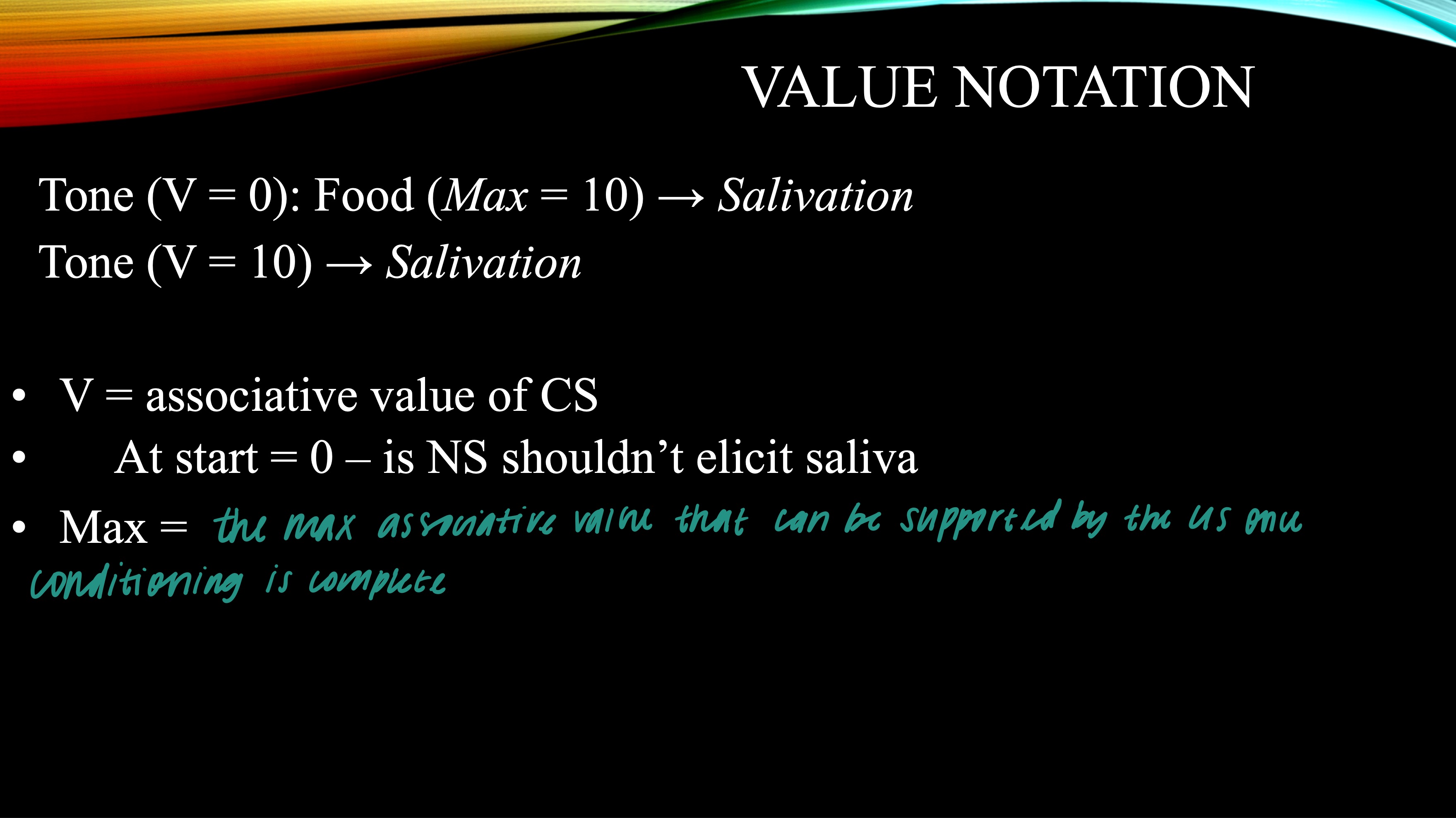
fixed action pattern (FAP)
a fixed sequence of R elicited by a specific S (called sign S), are similar to but more complex than reflexes because once a FAP starts it will continue until complete even in absence of a S
habituation
a decrease in the strength of an elciited, reflexive B following repeated presentations of the eliciting S, ie. we don’t notice a clock ticking after a while
sensitization
an increase in the strength of an elicited B following repeated presentation of the eliciting S, ie. you're reading and someone slams a door so you jump, and if doors keep slamming you become more jumpy
ratio strain
disruption in responding due to an overly demanding R requirement
three term contingency
explains how behavior is learned through interaction with the environment (ABC), including:
Antecedent – what happens before the behavior, ie. teacher says, “Time to clean up.”
Behavior – the action or response, ie. child puts toys away
Consequence – what happens after the behavior, ie. child gets praise
latent inhibition
prior exposure to a NS without consequences makes it harder to later form new associations with that S
procedure:
Pre-exposure: NS (ie. tone) is presented repeatedly without being paired with US (ie. food)
Conditioning: that same S is now paired with a US (ie. tone + food).
Test: Researchers observe how quickly the subject learns the association.
Effect:
Learning is slower than usual — the subject takes longer to associate the pre-exposed stimulus with the US.
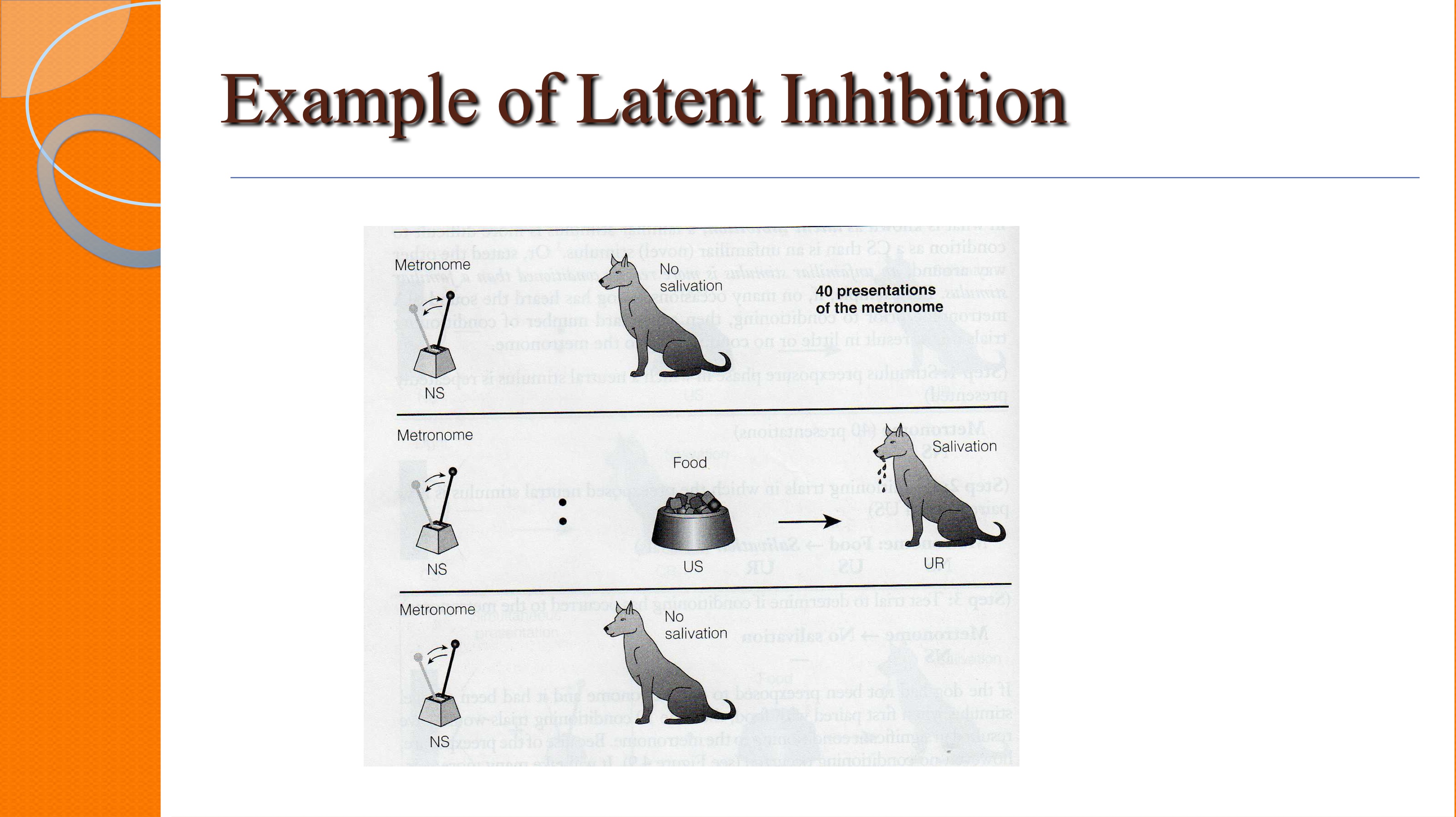
Pavlov’s take on the underlying neural mechanisms for C.C.
Pavlov’s view of CC was consistent with an SR (Stimulus–Response) perspective, meaning that conditioning formed a direct connection between the CS (ie. tone) and the R (ie. salivation), the CS came to automatically trigger the same R as the US without the animal needing to mentally represent the US.
so, in Pavlov's view, the tone (CS) directly caused salivation (R) after conditioning.
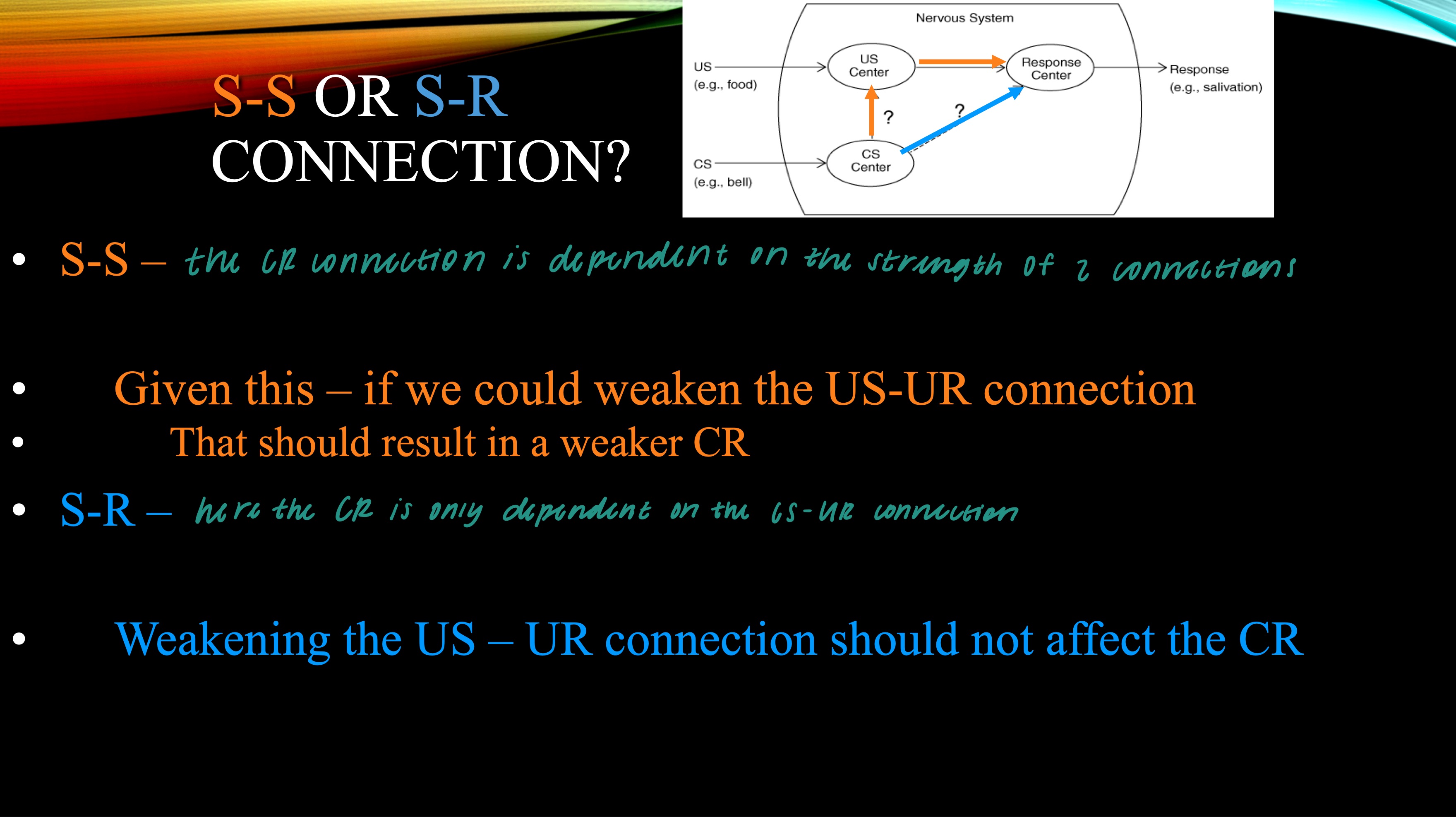
blocking
blocking shows that prior learning can prevent new learning when the outcome is already predicted
Procedure:
initial conditioning: NS (ie. tone) is paired with a US (ie. food) until it elicits a R (ie. salivation)
compound conditioning: a new S (ie. light) is paired with the original S (tone)
test: the new S (light) is presented alone
Effect:
the light fails to elicit salivating because food was already paired with the tone
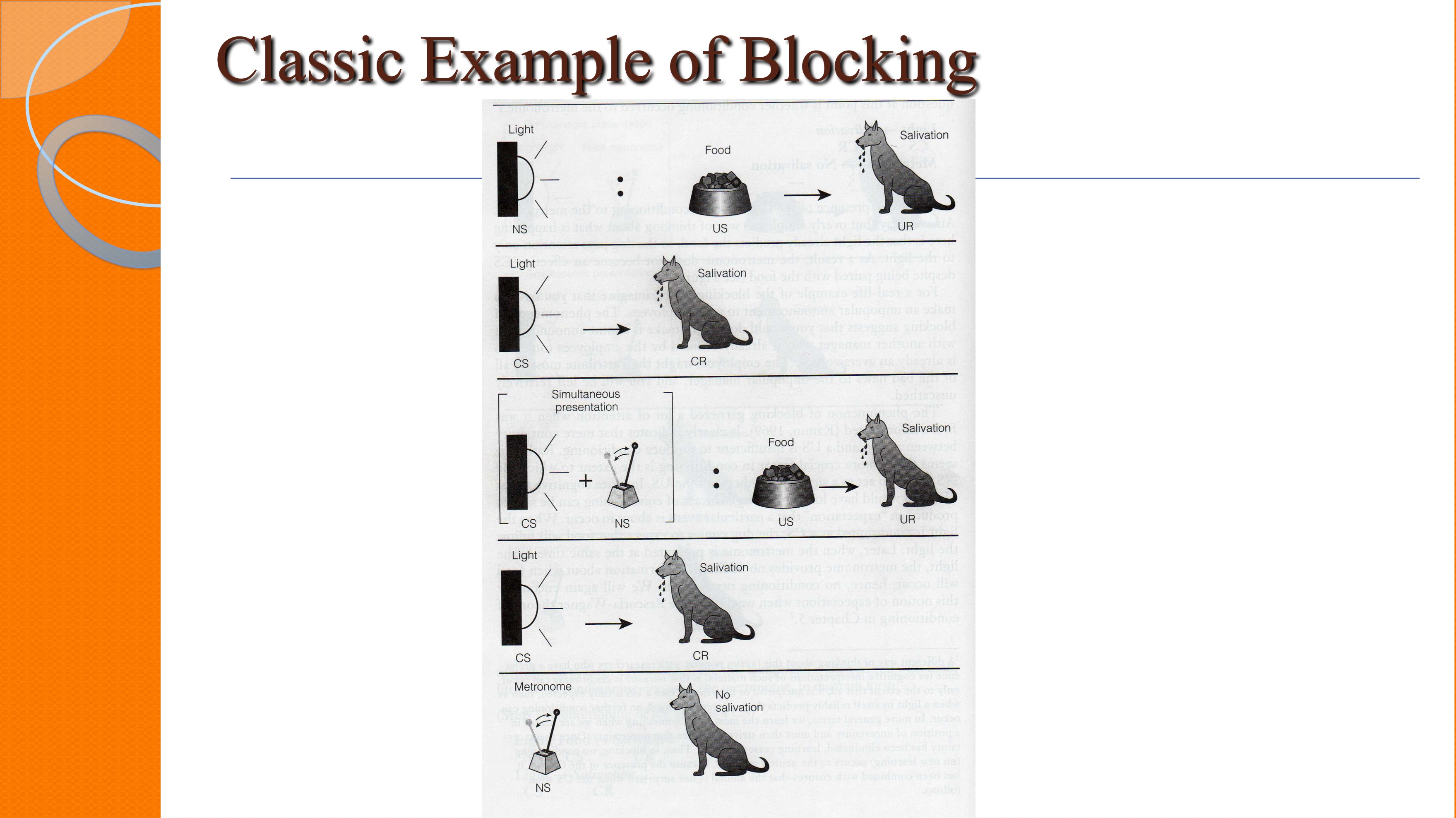
reinforcement and punishment matrix
reinforcement: strength of B increases
punishment: strength of B decreases
positive: S is presented
negative: S is removed
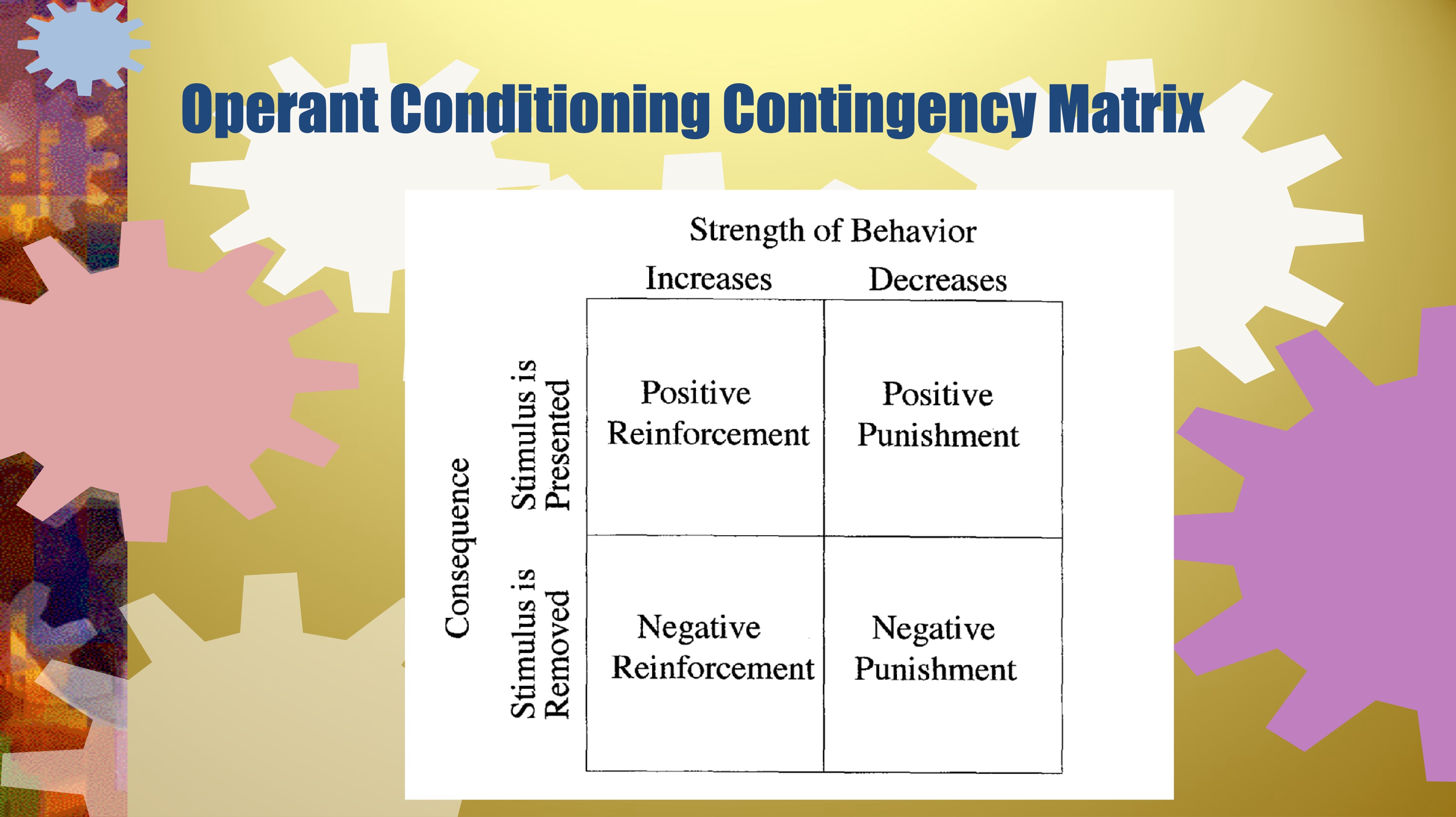
operant extinction
the weakening of B through the withdrawal of reinforcers for that B, ie. a child has learned to cry for candy in grocery store but will slowly stop crying when candy is no longer given
instinctive drift
four basic schedules
fixed ratio (FR): rein. contingent on a predictable # of R, high rate of R with short PRP
fixed interval (FI): rein. contingent upon first R after a predictable period of time, R consists of PRP followed by a gradually increasing rate of R as interval draw to a close- SCALLOPED
variable ratio (VR): rein. contingent upon an unpredictable # of R, high and steady rate of R with little/no PRP
variable interval (VI): rein. contingent on first R after an unpredictable period of time, moderate and steady rate of R with little/no PRP
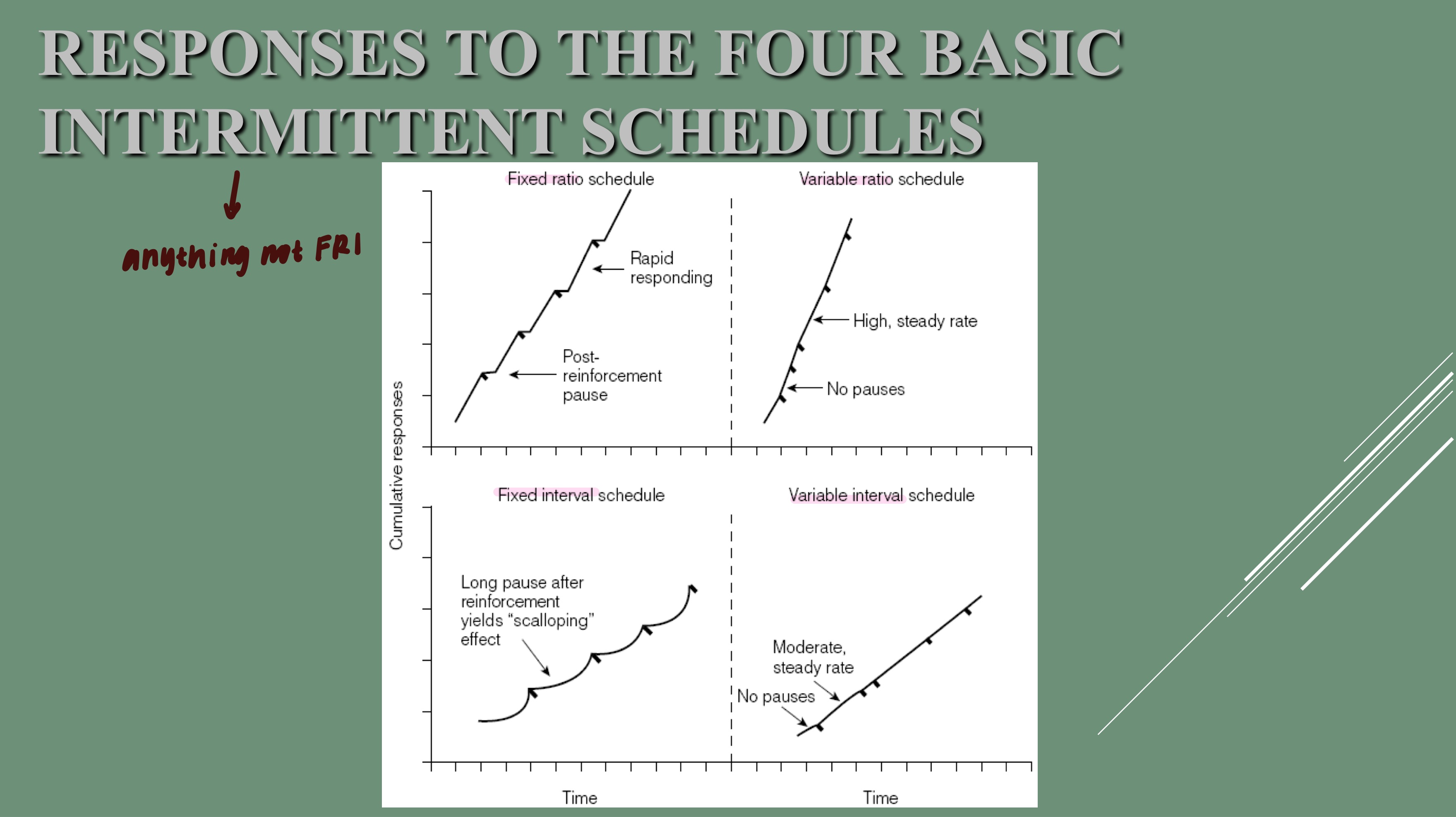
dog/shuttle box studies
Procedure:
Phase 1 (Inescapable Shock Group): Some dogs were restrained and received unavoidable electric shocks.
Phase 2 (Escape Test): All dogs were placed in the shuttle box. Now, they could escape the shock by jumping to the other side.
Findings:
Dogs previously exposed to inescapable shocks often did not try to escape—they just lay down and whined, even though they could now avoid the shock.
Dogs not pre-exposed to inescapable shocks quickly learned to escape by jumping the barrier.
Conclusion:
The dogs learned that their actions had no effect, so they stopped trying, or learned helplessness.
It demonstrated that past experiences of uncontrollability can lead to passivity and depression-like behavior, even when escape becomes possible.
matching law
the proportion of R emitted on a particular schedule matches the proportion of rein. obtained on that schedule, ie. a pigeon will emit ~twice as many R on VI-30 than VI-60
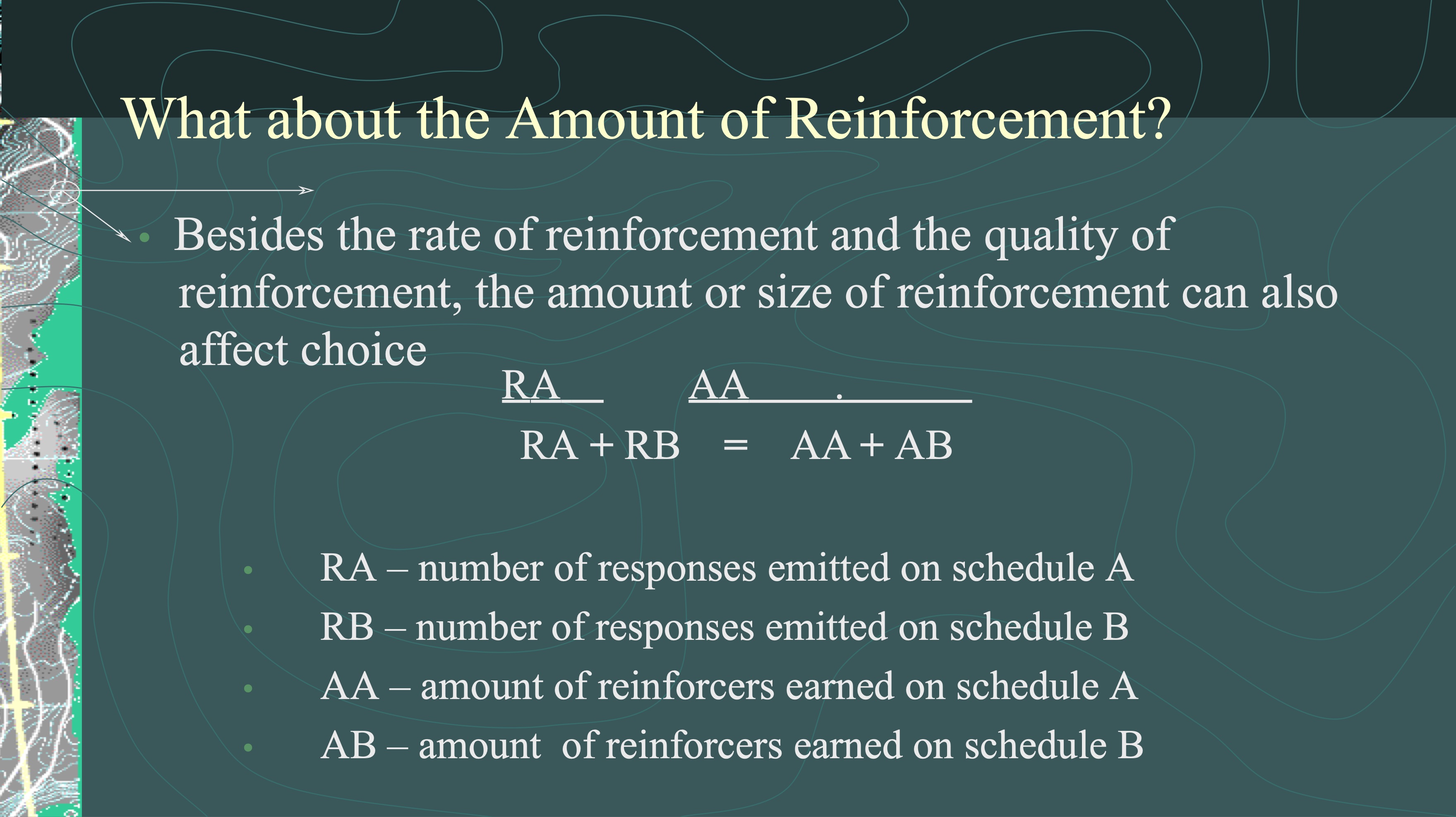
schedule of reinforcement/partial reinforcement effect
B that has been maintained on an intermittent schedule will extinguish slower than on a continuous schedule, specifically VR, the less frequent the rein. the longer it takes to “discover” that the rein. is no longer availible
history of reinforcement
the more rein. an individual has received for a B, the greater the resistance to extinguish, ie. easier to extinguish a rat trained 10 times than a rat trained 100 times
magnitude of reinforcer
large magnitude rein. sometimes results in greater resistance, ie. preferred food harder to extinguish than less preferred food
degree of deprivation
greater level of deprivation=greater resistance, ie. a rat at 90% free feeding will stop lever pressing quicker than a rat at 80% free feeding
previous experience with extinction
greater number of prior exposures to extinction will lead to quicker-extinguishing B in future, ie. a child learns to stop whining in store after a short period of time
SD for extinction
extinction is greatly facilitated when there is an SD that signals onset of extinction